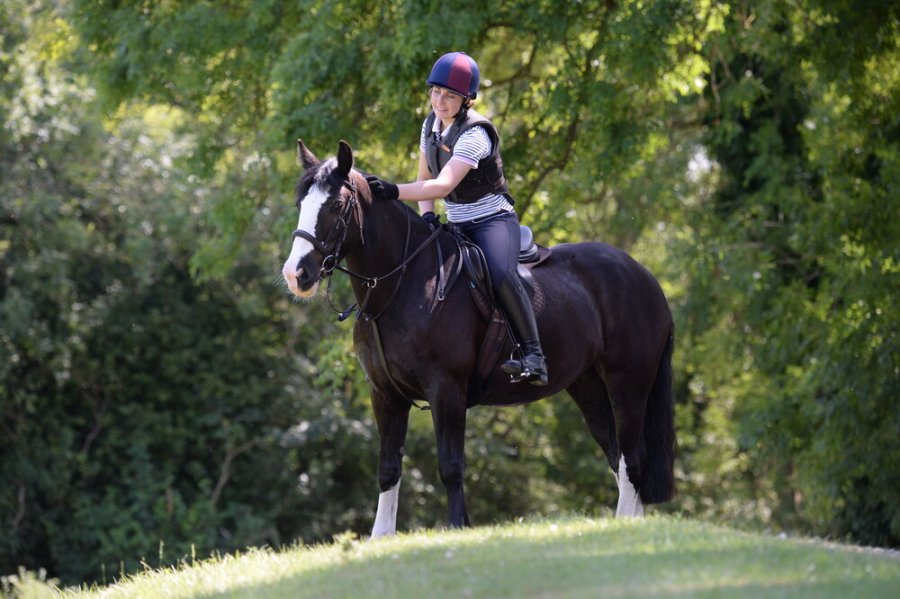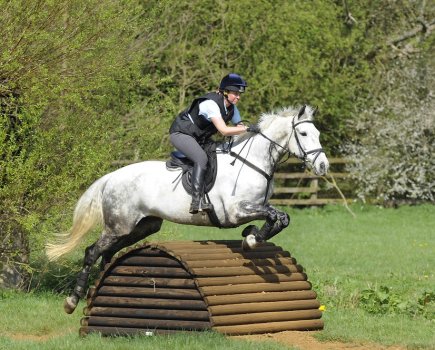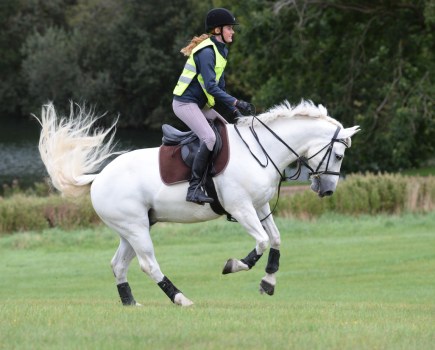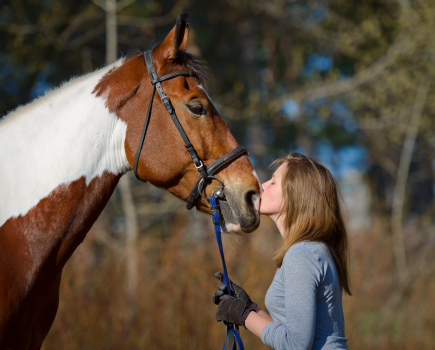We’ve all heard the term horsemanship, but what does it actually mean? Barrel racing trainer Nicole Aichele and dressage coach Adam Kemp tackled this topic at the International Eventing Forum at Hartpury Equine in February.
Although barrel racing may be an unexpected sight at an eventing forum, especially when combined with dressage, it was a fantastic example of how riders practising completely different disciplines are all linked by the same goal — achieving excellent horsemanship.
While it may seem that some people are born with good horsemanship — and perhaps they are better listeners and better communicators — it’s also something that can be developed with time and practice.
“Horsemanship is knowing the horse,” says Nicole. “Training for both dressage and barrel racing is based on a common theme — understanding and educating horses. It doesn’t matter what discipline you’re in, horsemanship is so important.”
“Handling and riding horses can be broken down into three levels — common sense, experience and horsemanship,” continues Adam. “Horsemanship is different from experience. It’s not about knowing how to ride or how to act around a horse; it’s about how and when you communicate with the horse.”
A good partnership
Any rider, from a complete novice upwards, can be told to squeeze their legs to make their horse go forward, and to sit deeper while putting contact on the reins to ask for stop.
This is riding at its most basic — learning the signals to tell your horse to do what you want him to. Of course, the horse must also understand what these signals mean.
“Giving him these signals in the right way requires his understanding of the signals, but also your knowledge of the horse,” says Adam. “How the horse thinks, feels, his behaviour. Horsemanship is knowing when to ask things of your horse.”
It comes down to creating a good partnership with your horse, meaning that he trusts you and can confidently respond to whatever you ask of him.
“In barrel racing, I don’t need to do all the fancy moves like in dressage,” says Nicole. “But the avenue of getting to the top of the sport and the training I do with my horses can certainly relate to other disciplines.
“My sport is fast, so I need my horse to react even faster. This requires what I like to think of as a 5G connection, and that’s what you should always aim to have with your horse. If you only have 3G, your connection will drop.”
Developing this connection isn’t just about riding, spending time with your horse on the ground and doing in-hand work is excellent for building your bond and trust.
Add to your horse’s toolbox
Whatever you ask of your horse, as the rider you’re responsible for giving him the solution to the question you’re asking of him. Taking responsibility for your horse and preparing him correctly to carry out each exercise is important.
“When your horse is working, his whole body should be connecting and his hind end engaged underneath him,” says Nicole. “For a horse to be at his most powerful, dynamic and athletic, his whole body needs to be working as one. As a rider, you can’t have your horse’s head turning and his hindquarters not engaging. You can’t ask your horse to do a fast, athletic movement without giving him the tools in his toolbox to do it well, comfortably and safely.”
Nicole goes on to explain that comfort and correctness are two very different things.
“As you’re teaching correctness, it may be uncomfortable to start with for the horse. You’re asking him to move in ways that he’s not used to,” she says. “But as he grows, it becomes normal and therefore comfortable for him. He can then enjoy his job because he’ll have all the tools to do it correctly.”
Adam agrees. “It’s the same concept in dressage. You have to give the horse the tools to work with and recognise that what you’re asking him to do may be difficult for him. You can’t expect a horse to want to do it unless you make it easy for him. So he needs the correct toolbox to use himself to keep his balance, regardless of which discipline.”
This ‘toolbox’ is built into everyday riding. Whether you’re schooling, hacking or competing, you should be looking to get your horse working more accurately and athletically so that he can grow in confidence and continue his development.
“As riders, we think we need to show a horse everything,” adds Nicole. “But we just need to show him one main thing — how to safely and most effectively use his body.”
Don’t miss the latest issue of Your Horse Magazine, jam-packed with training and veterinary advice, horse-care tips and the latest equestrian products, available now.









